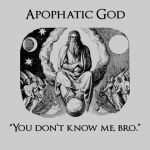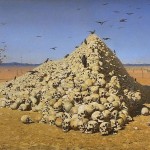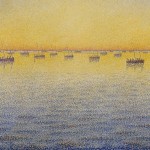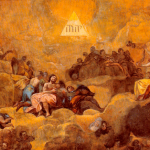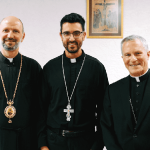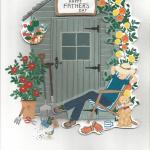This is why image-making is so powerful and affecting. Though we know images to be augmentations of reality, we accept them anyway, and so those who reject these images are then seen as blasphemers. We see this in images as different as the Charlie Hebdo cartoons and the Abu Ghraib photographs. To accept them as mere harmless fabrications is to allow for the enemy’s story about us to triumph and for us to accept them is to despair in the knowledge of what we are.
And so the only alternative is to continue to engage in this endless image and myth-making. As William Faulkner writes in “Dry September” his stunning indictment of lynching: “…the silver dream accumulated, inevitably on and on.”
AR: That leads me to my last question, which has to do with racism and violence. I’m thinking not just about Dylan Roof and the Charleston church shooting, but the shooting of Tami Rice in Cleveland, and Freddy Gray in Baltimore, and now Sandra Bland in Texas. Some would say that we have an epidemic on our hands, but others like Ta-Nehisi Coates, author of the recent bestseller Between the World and Me, says that this isn’t at all new; that this is an almost dutiful playing out a script that was written long ago, one that we can’t help but continue to act out. What do you make of this idea that somehow we are stuck in a endlessly recurring cycle of racial violence?
DG: This is a really tough question, but one I think about a lot. One of the biggest influences on me as a writer is James Baldwin. I re-read Notes of a Native Son a couple times a year, and it has not ceased to level me every time. I bring up Baldwin because he left America for Paris because he felt that inevitably something bad was going to happen to him. In his 1984 Paris Review “Art of Fiction” interview, he says:
I was broke. I got to Paris with forty dollars in my pocket, but I had to get out of New York. My reflexes were tormented by the plight of other people. Reading had taken me away for long periods at a time, yet I still had to deal with the streets and the authorities and the cold. I knew what it meant to be white and I knew what it meant to be a nigger, and I knew what was going to happen to me. My luck was running out. I was going to go to jail, I was going to kill somebody or be killed. My best friend had committed suicide two years earlier, jumping off the George Washington Bridge.
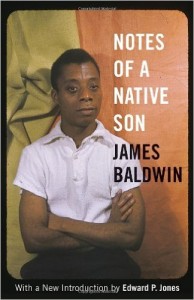
He goes on to say in the interview that he really felt that he would end up like his friend if he stayed. This awareness and foresight of what would become of him isn’t just because of his understanding of the racism inherent in American society at the time, but also his understanding of his own personal limits and tendencies. In the title essay of Notes of a Native Son we see him lose his composure and throw a mug at a waitress who won’t serve him because he’s black. In that moment where he’s running away from the restaurant to avoid the police, Baldwin knows how close he was to being killed, how he had been caught up in the cycle of violence, and it scares him.
To answer your question, yes, I believe we are stuck in recurring cycle of violence that we can trace back to the moment the first African slave set foot on this continent. I think that the reason why the cycle continues is because—to return to a term I used earlier—the black body is uncanny to the white gaze—it is both familiar and unfamiliar. On the one hand, mainstream public and political discourse celebrates the arrival of a kind of color-blind society, in which everyone agrees that one’s race or ethnicity does not totalize them. One the other hand, you still have many places in the country where race is very divisive. There is deep, old, and unresolved anger and tension in communities across the country. I think we already, evolutionarily, dis-trust people who don’t look like us, and that then is compounded by the history of race in America, so that in times of great economic and social upheaval these deep, unresolved tensions come to the surface.
I think there’s a simultaneous attraction to the black body and a fear of it. This dichotomy can be traced back hundreds of years. Edward Said’s Orientalism is indispensable here, as is Eric Lott’s Love and Theft, which delves into the history of blackface and the spectacle of the black performer. Minstrel shows are a microcosm of this attraction and fear, as is the opening of Ellison’s Invisible Man, “Battle Royale,” in which the boy is celebrated for his high academic achievement and given a scholarship and then forced to participate in a no-holds-barred boxing match on an electrified floor.
I think even now some perceive people of color, especially black men, as having been (due to ancestry) contaminated with this past violence, and that they might exact revenge at any time. I’m reminded of Flannery O’Connor’s long story “The Displaced Person,” in which the owner of a large farm takes in a Polish family escaping World War II. The owner is wary of the refugees because she imagines that they carry with them whatever violence drove them to America like “rats with typhoid fleas.” Though these people are innocent, she sees them as dangerous.
On top of this, I believe that we live in a culture where violence is the celebrated means of solving problems (not to mention entertainment). Violence and aggression are forms of expression, ways of relating to and being in the world, that we as Americans understand. That’s what I was driving at with the subtitle to A Good War is Hard to Find—“The Art of Violence in America.” When I really took a long hard look at my experiences with violence—what I call my visual education in violence—I realized that America had gotten so adept at, and comfortable with, violence that it had become second nature, instinctual.
That’s the way I am beginning to look upon situations like Tamir Rice. There is a terrible and awesome instinctual swiftness to what happened to that boy—he was only a boy playing with a toy gun, and yet the officers responsible for his death saw something else. Maybe a better way to put it might be that these officers found themselves caught up in a situation where based on what they had been told and what they saw allowed only one way out, one way to resolve it—a true poverty and perversion of imagination. And with Freddy Gray and Sandra Bland what happened to them is classic lynch mob protocol, a spiriting away of the person to “talk to them”— a disappearing; a negation—that makes their eventual deaths not murders but the unfortunate collateral damage of a highly procedural and codified law enforcement system. Read that Faulkner story I mention above (“Dry September”) and you’ll see exactly what I mean, just how little things have changed.
Elaine Scarry’s The Body in Pain is necessary reading here. “The very content of pain,” she theorizes, “ is negation.” It destroys language and therefore reason. I might even go so far as to say that pain is mightier than the sword. According to Scarry, it has the power to undo, unhinge, “unmake” reality. The weapon could be anything: a baton, a gun, a fist, a brick; in cases of torture it could be something unorthodox and banal, like a desk drawer. As I’ve written elsewhere, “if we think of the photos and images of [violence] in this way, as memorializing the negation of humanity and the incremental undoing of the world, then we are closer to understanding the stakes” both of violence as a means of resolving conflict and of bearing witness.
Te-Nehisi Coates’ “Letter to My Son,” is, alongside the Faulkner, required reading. He evokes the word “body” forty-one times while chillingly explaining to his son:
There is nothing uniquely evil in these destroyers or even in this moment. The destroyers are merely men enforcing the whims of our country, correctly interpreting its heritage and legacy.
By way of conclusion, I should say that the only way I know of to interrupt such cycles of violence is for there to be true dialogue about the issues at the core of the violence. Making art is one way of opening a dialogue about issues that are otherwise extremely difficult to discuss out loud. That’s primarily why I write. I want to be bear witness to what I believe is a culture of violence and death. I want to make public what is otherwise hidden.
The video above is the lecture mentioned by Dave Griffith in this interview. You might also want to take a look at Alasdair MacIntyre’s revolutionary argument about disability.
While your at it, please drop a coin in my PayPal donation button fountain. Times is hard.

